This comprehensive AP European History Cheat Sheet offers a detailed overview of key events, concepts, and critical information across all units of the AP European History curriculum. By condensing complex historical topics into simple, easy-to-understand points, it helps students efficiently review and reinforce their knowledge. The inclusion of significant dates, events, and example questions enhances understanding of historical themes and prepares students for both multiple-choice and free-response sections of the exam. With clear, concise summaries and well-organized sections, this cheat sheet is an invaluable resource for mastering the material and achieving a high score on the AP European History exam.
Free AP European History Practice Test
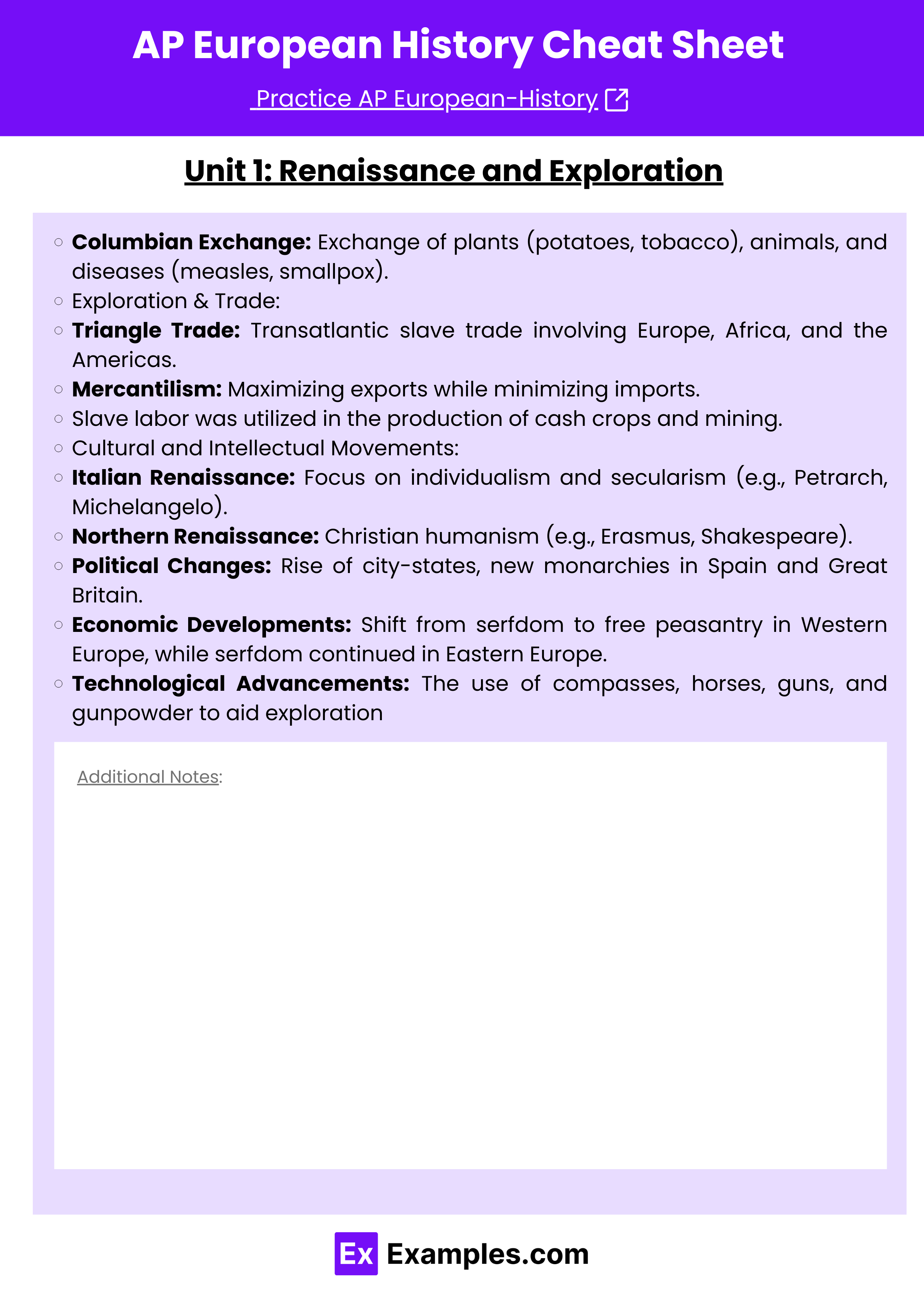
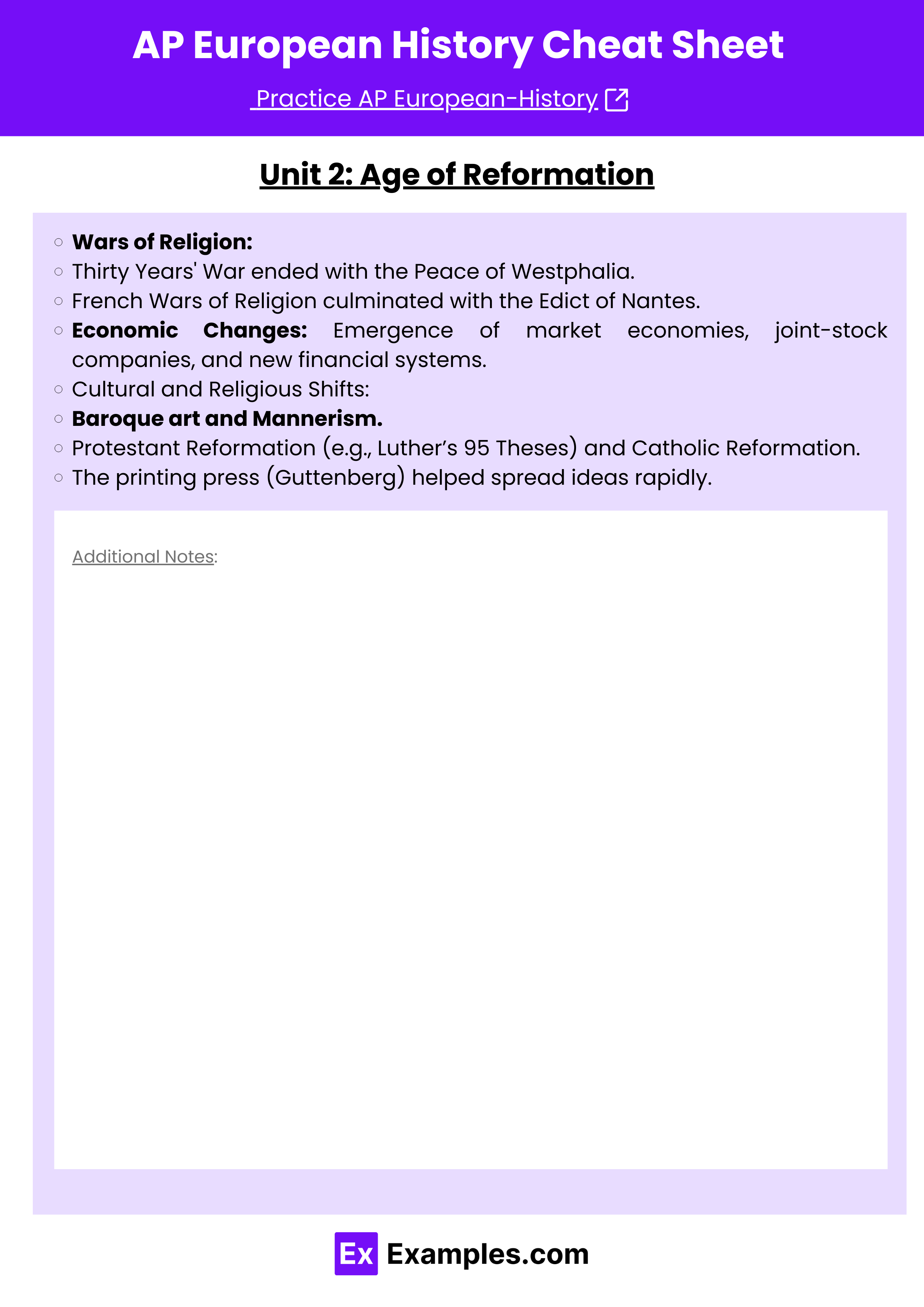
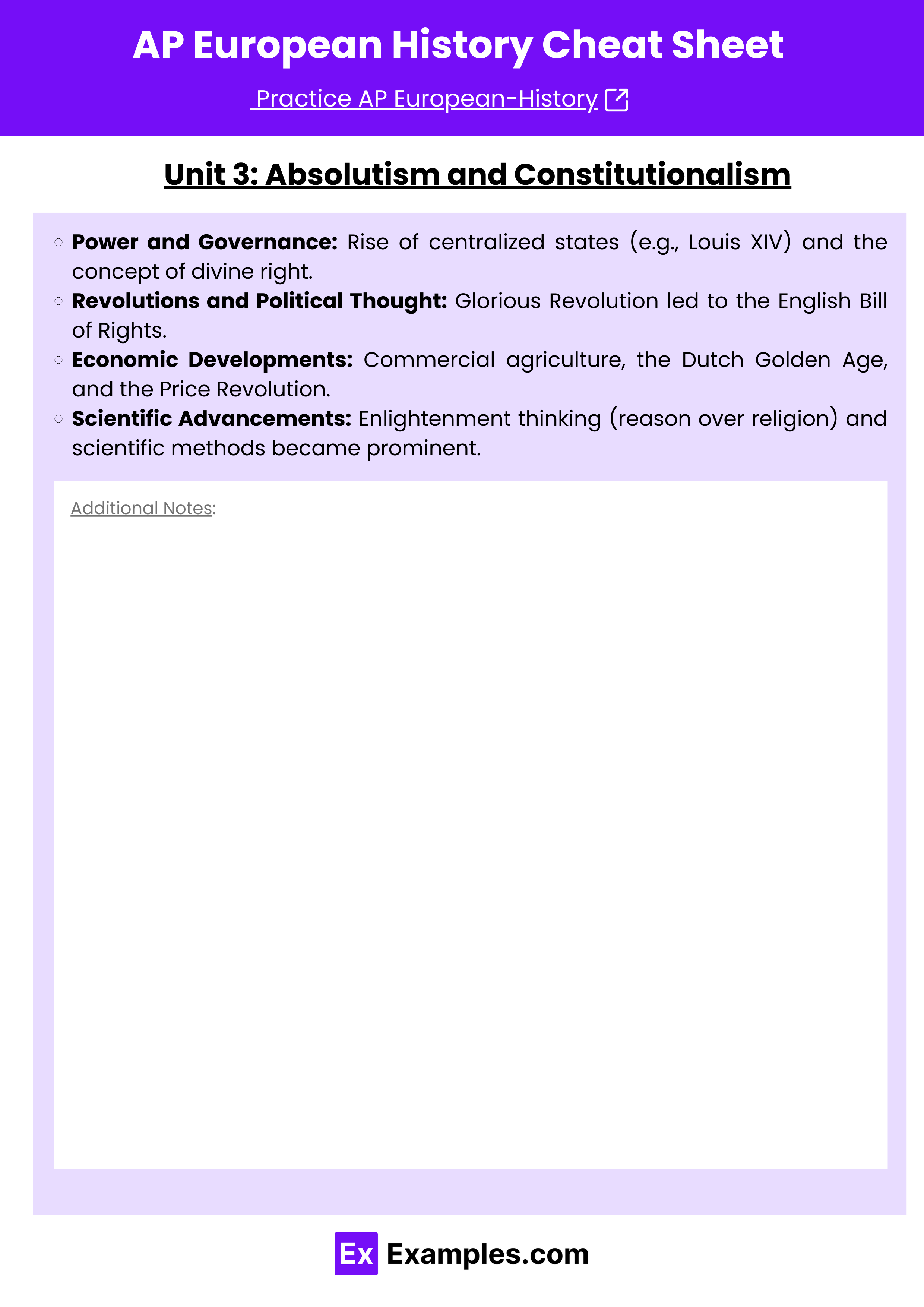
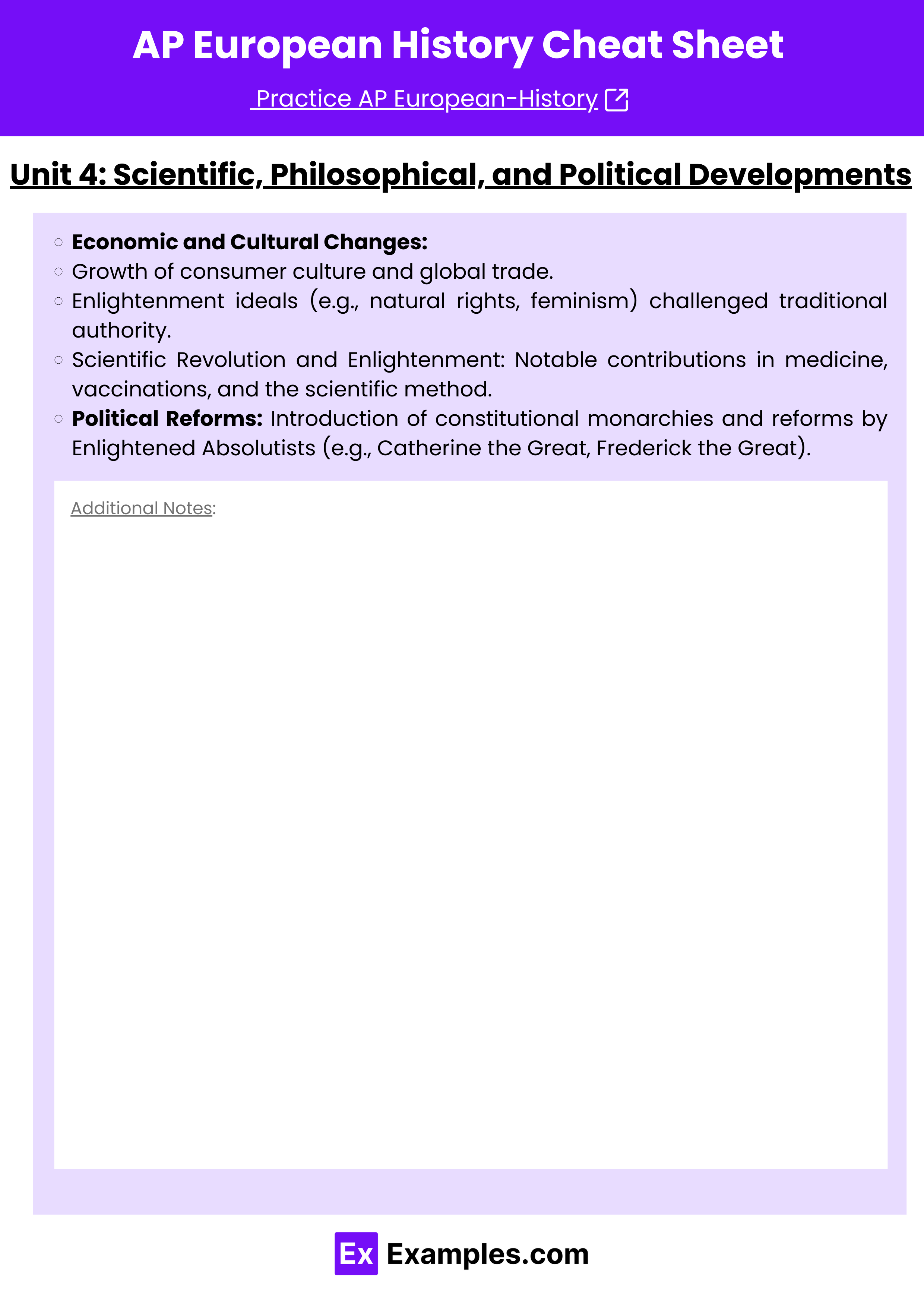
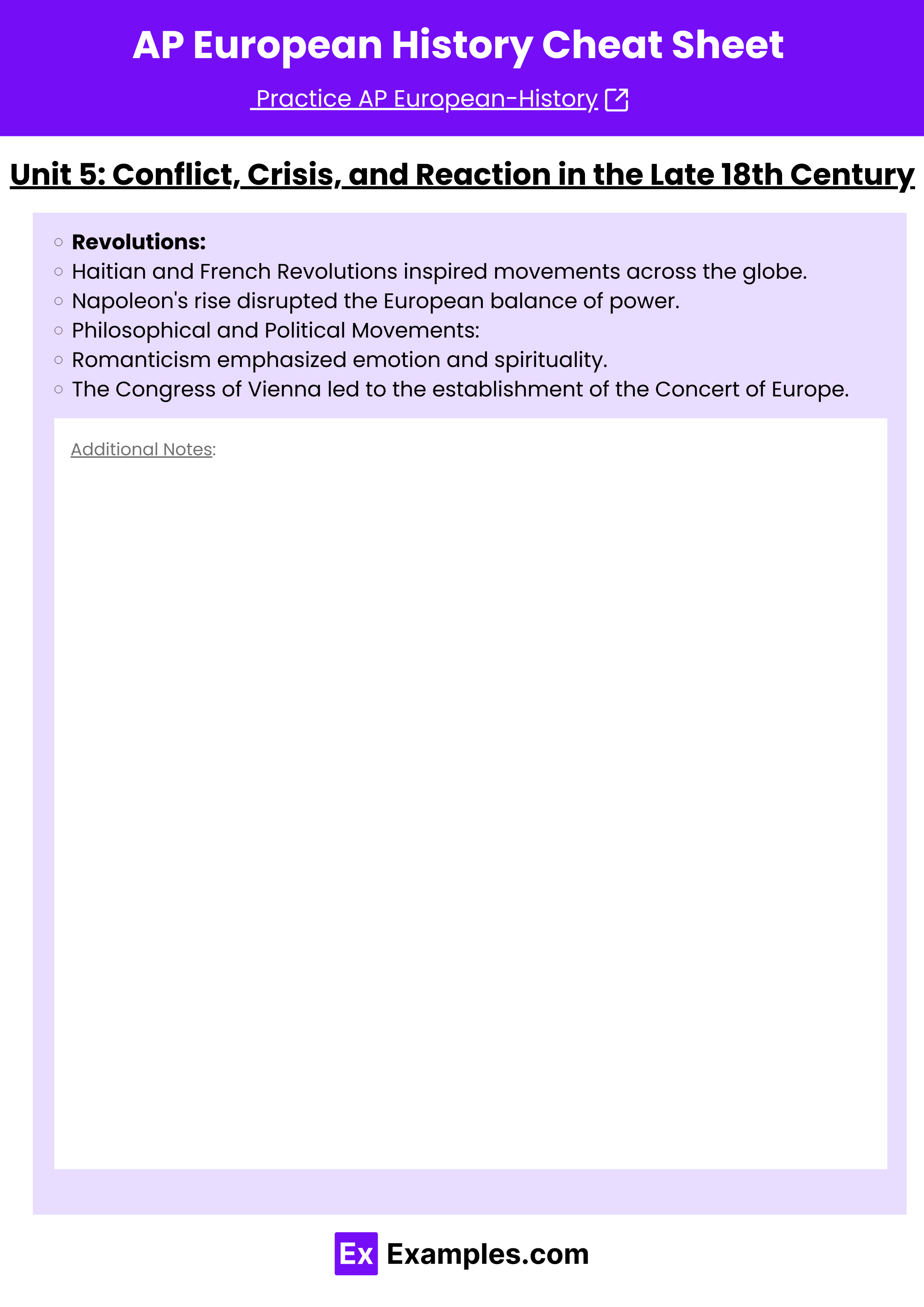
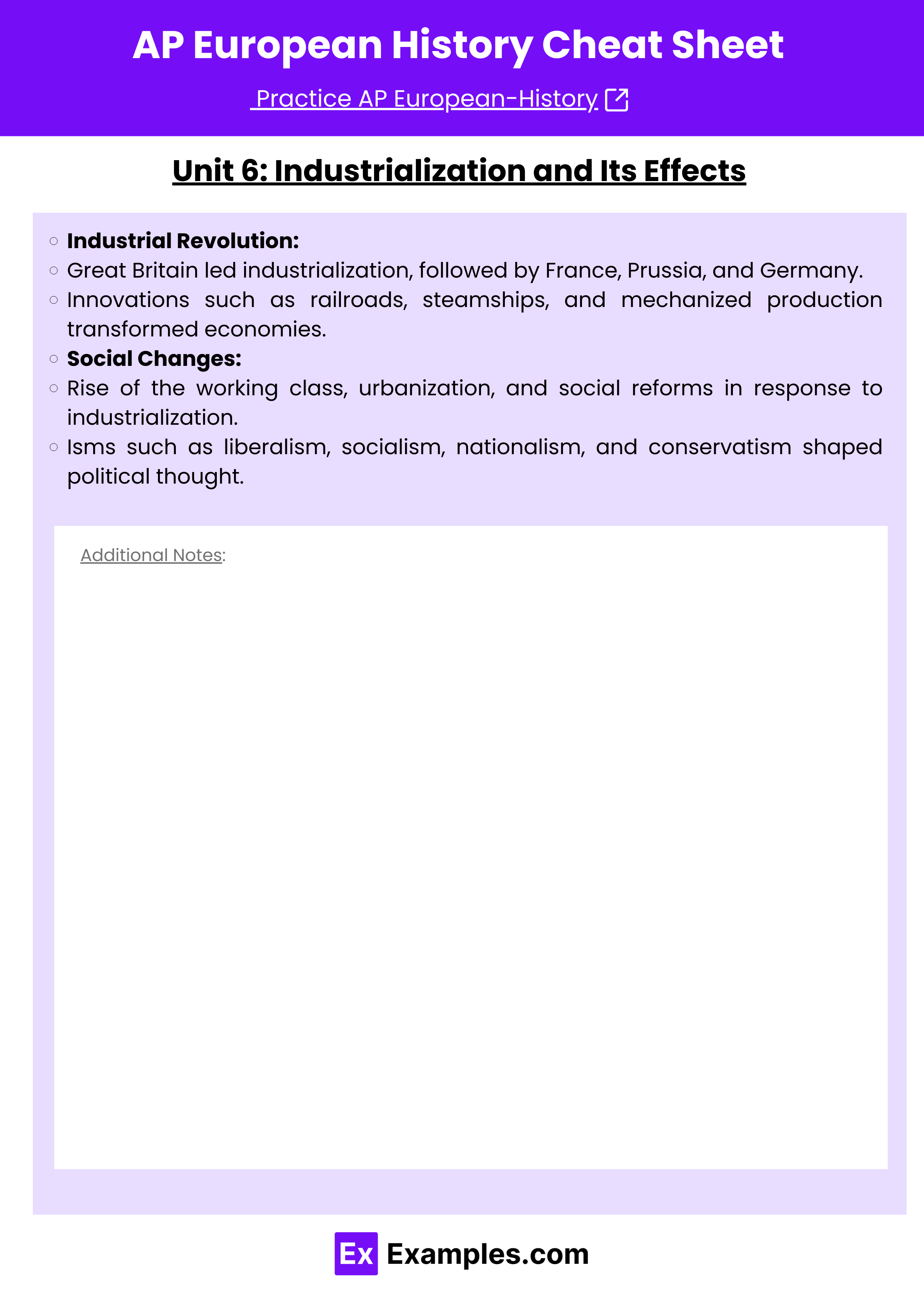
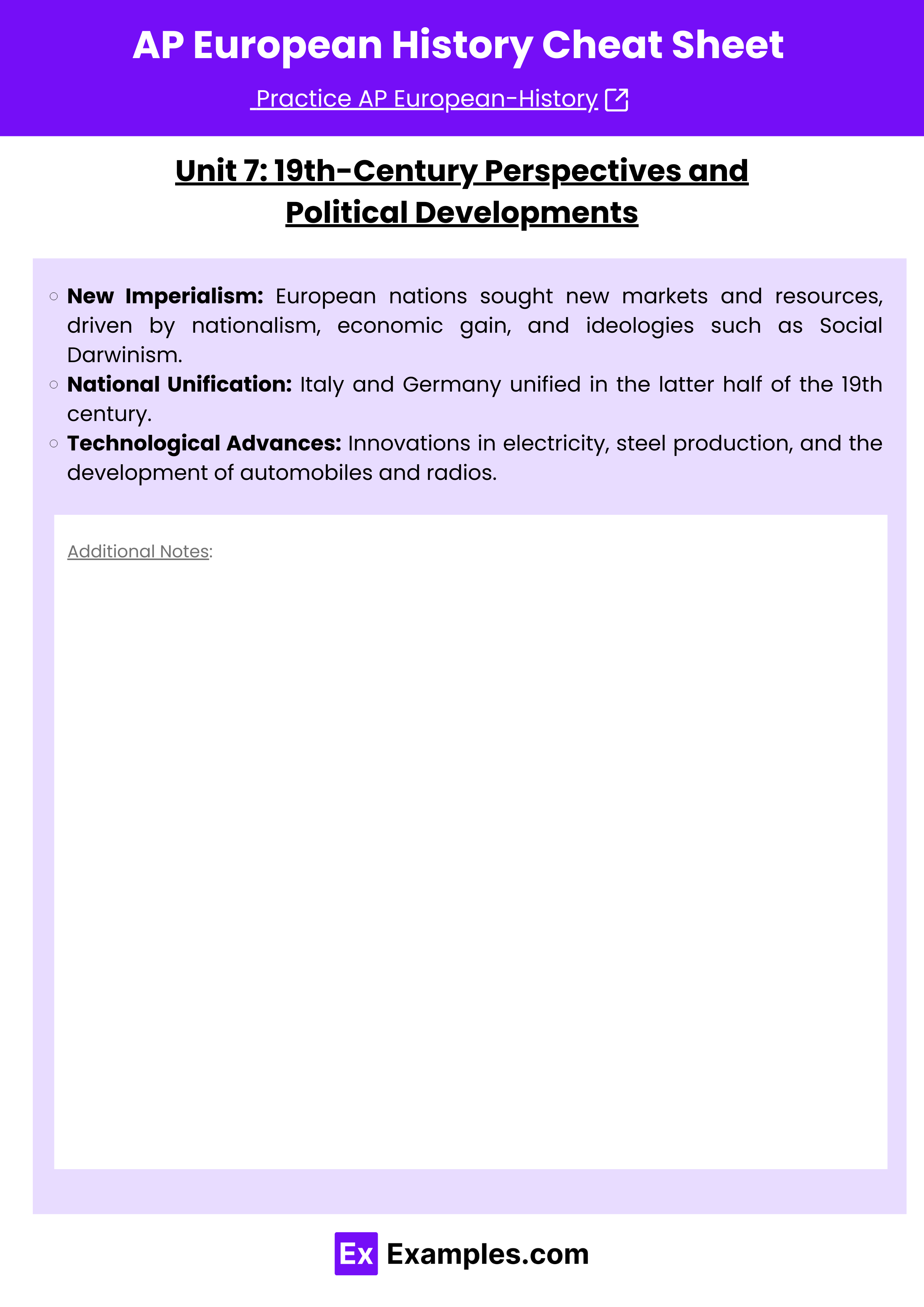

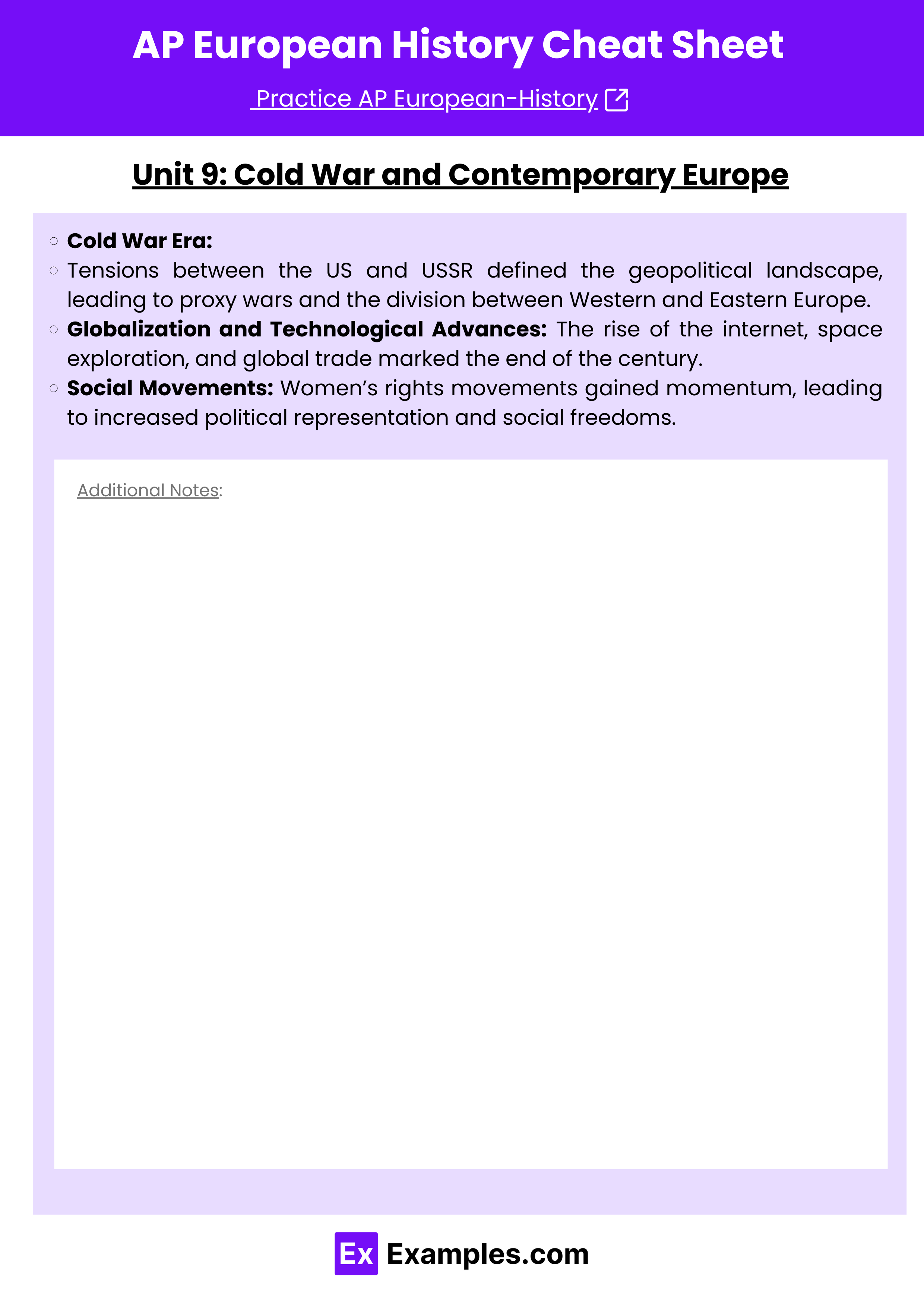
Download AP European History Cheatsheet – Pdf
Unit 1: Renaissance and Exploration
Columbian Exchange: Exchange of plants (potatoes, tobacco), animals, and diseases (measles, smallpox).
Exploration & Trade:
Triangle Trade: Transatlantic slave trade involving Europe, Africa, and the Americas.
Mercantilism: Maximizing exports while minimizing imports.
Slave labor was utilized in the production of cash crops and mining.
Cultural and Intellectual Movements:
Italian Renaissance: Focus on individualism and secularism (e.g., Petrarch, Michelangelo).
Northern Renaissance: Christian humanism (e.g., Erasmus, Shakespeare).
Political Changes: Rise of city-states, new monarchies in Spain and Great Britain.
Economic Developments: Shift from serfdom to free peasantry in Western Europe, while serfdom continued in Eastern Europe.
Technological Advancements: The use of compasses, horses, guns, and gunpowder to aid exploration.
Unit 2: Age of Reformation
Wars of Religion:
Thirty Years' War ended with the Peace of Westphalia.
French Wars of Religion culminated with the Edict of Nantes.
Economic Changes: Emergence of market economies, joint-stock companies, and new financial systems.
Cultural and Religious Shifts:
Baroque art and Mannerism.
Protestant Reformation (e.g., Luther’s 95 Theses) and Catholic Reformation.
The printing press (Guttenberg) helped spread ideas rapidly.
Unit 3: Absolutism and Constitutionalism
Power and Governance: Rise of centralized states (e.g., Louis XIV) and the concept of divine right.
Revolutions and Political Thought: Glorious Revolution led to the English Bill of Rights.
Economic Developments: Commercial agriculture, the Dutch Golden Age, and the Price Revolution.
Scientific Advancements: Enlightenment thinking (reason over religion) and scientific methods became prominent.
Unit 4: Scientific, Philosophical, and Political Developments
Economic and Cultural Changes:
Growth of consumer culture and global trade.
Enlightenment ideals (e.g., natural rights, feminism) challenged traditional authority.
Scientific Revolution and Enlightenment: Notable contributions in medicine, vaccinations, and the scientific method.
Political Reforms: Introduction of constitutional monarchies and reforms by Enlightened Absolutists (e.g., Catherine the Great, Frederick the Great).
Unit 5: Conflict, Crisis, and Reaction in the Late 18th Century
Revolutions:
Haitian and French Revolutions inspired movements across the globe.
Napoleon's rise disrupted the European balance of power.
Philosophical and Political Movements:
Romanticism emphasized emotion and spirituality.
The Congress of Vienna led to the establishment of the Concert of Europe.
Unit 6: Industrialization and Its Effects
Industrial Revolution:
Great Britain led industrialization, followed by France, Prussia, and Germany.
Innovations such as railroads, steamships, and mechanized production transformed economies.
Social Changes:
Rise of the working class, urbanization, and social reforms in response to industrialization.
Isms such as liberalism, socialism, nationalism, and conservatism shaped political thought.
Unit 7: 19th-Century Perspectives and Political Developments
New Imperialism: European nations sought new markets and resources, driven by nationalism, economic gain, and ideologies such as Social Darwinism.
National Unification: Italy and Germany unified in the latter half of the 19th century.
Technological Advances: Innovations in electricity, steel production, and the development of automobiles and radios.
Unit 8: 20th-Century Global Conflicts
World Wars:
World War I and World War II reshaped global geopolitics, leading to widespread devastation and the rise of totalitarian regimes.
The Great Depression affected economies worldwide.
Ideological Conflicts: Fascism, socialism, and communism competed for dominance.
Technological and Social Progress: The use of tanks, machine guns, and nuclear weapons changed warfare.
Unit 9: Cold War and Contemporary Europe
Cold War Era:
Tensions between the US and USSR defined the geopolitical landscape, leading to proxy wars and the division between Western and Eastern Europe.
Globalization and Technological Advances: The rise of the internet, space exploration, and global trade marked the end of the century.
Social Movements: Women’s rights movements gained momentum, leading to increased political representation and social freedoms.

